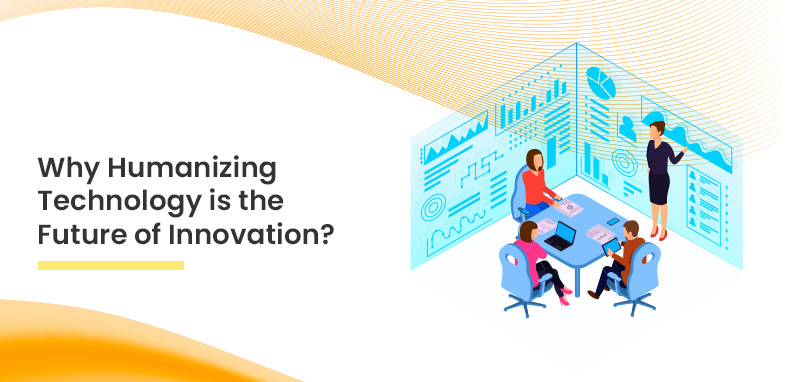Why Humanizing Technology is the Future of Innovation
In the ever-changing landscape of technology, the concept of humanizing technology stands out as a transformative approach poised to redefine how we interact with digital tools and systems. As we move deeper into the digital age, the need for technology to resonate with human values, emotions, and behaviors has never been more critical. Humanizing technology is not merely a trend but a foundational shift that promises to drive the future of innovation. This blog delves into why humanizing technology is the future of innovation and how it shapes our interactions with digital ecosystems.

The Imperative for Human-Centric Design
Historically, designers have often prioritized efficiency and functionality in the design of technology. While these aspects are crucial, they do not always align with the nuanced and complex ways humans interact with the world. Human-centric design, therefore, emerges as a necessity, ensuring that technology not only performs its intended functions but does so in a way that is intuitive, empathetic, and relatable to users.
Human-centric design involves understanding and anticipating the needs, preferences, and emotions of users. It means creating technology that simplifies tasks, reduces friction, and enhances the overall user experience. For instance, designing user interfaces with accessibility in mind reaches a wider audience, including individuals with disabilities. This approach not only improves usability but also aligns technology with human values of inclusivity and equality.
Building emotional connections with technology
One of the most compelling reasons for humanizing technology is the potential to build emotional connections between users and digital tools. Emotions play a significant role in how we interact with technology. Designing technology to comprehend and react to our emotional states can result in interactions that are more meaningful and satisfying.
Take, for instance, virtual assistants and chatbots that use natural language processing and sentiment analysis. By recognizing and responding to emotional cues, these systems can offer support that feels more personalized and empathetic. This emotional intelligence can transform mundane interactions into engaging and supportive experiences, fostering a stronger bond between users and technology.
Enhancing User Experience Through Personalization
Personalization is another critical aspect of humanizing technology. Technology that adapts to individual preferences can significantly enhance the user experience in a world where users face a multitude of choices. Personalized recommendations, tailored content, and adaptive user interfaces all contribute to a more seamless and relevant interaction with digital tools.
For instance, streaming platforms like Netflix and Spotify use sophisticated algorithms to analyze user behavior and preferences, providing tailored content recommendations that align with individual tastes. This level of personalization not only improves user satisfaction but also drives engagement and loyalty.
The role of ethics and trust in technological innovation is significant.
As technology becomes increasingly integrated into our daily lives, ethical considerations and trust become paramount. Humanizing technology involves addressing these concerns by ensuring transparency, accountability, and ethical practices in technology design and deployment.
In this regard, data privacy is a significant issue. Users must have confidence in the responsible and secure handling of their personal information. Transparent data practices and clear consent protocols are essential to building this trust. Humanizing technology with a focus on ethical considerations can foster a more trustworthy relationship between users and digital systems.
Fostering Inclusivity and Accessibility
Humanizing technology also means addressing the diverse needs of different user groups. Inclusivity and accessibility are critical components of this approach. We should design technology to accommodate a wide range of abilities, backgrounds, and preferences.
Accessibility features such as voice commands, screen readers, and customizable interfaces ensure that technology is usable by individuals with various disabilities. By prioritizing inclusivity, we create a more equitable digital environment where everyone can benefit from technological advancements.
The Future of Innovation: Human-Technology Collaboration
Looking ahead, the future of innovation lies in the collaboration between humans and technology. Humanizing technology means designing systems that complement human abilities, enhance productivity, and support creative endeavours. This collaboration can lead to new possibilities and breakthroughs that were previously unimaginable.
Conclusion
Humanizing technology is not a passing trend but a fundamental shift that will shape the future of innovation. By prioritizing human-centric design, emotional connections, personalization, ethics, inclusivity, and empowerment, we can create technology that enhances our lives and aligns with our values.